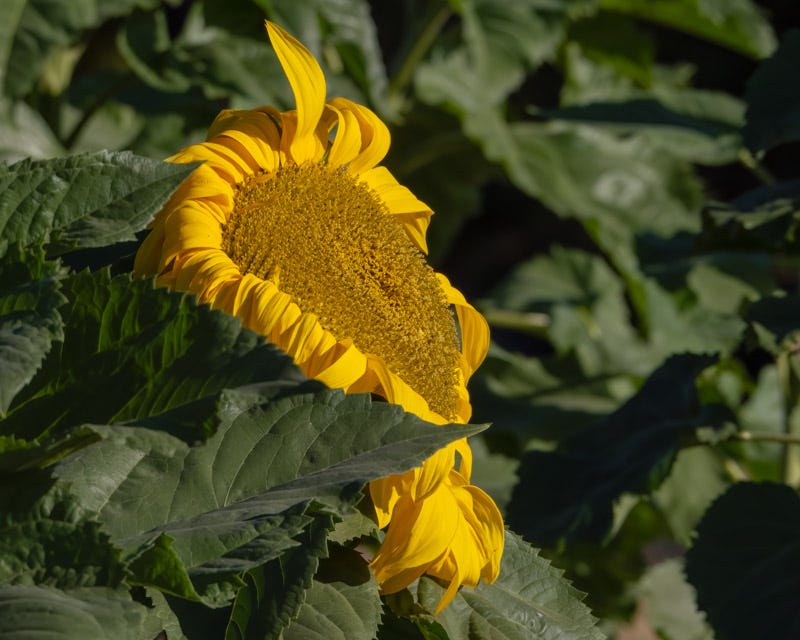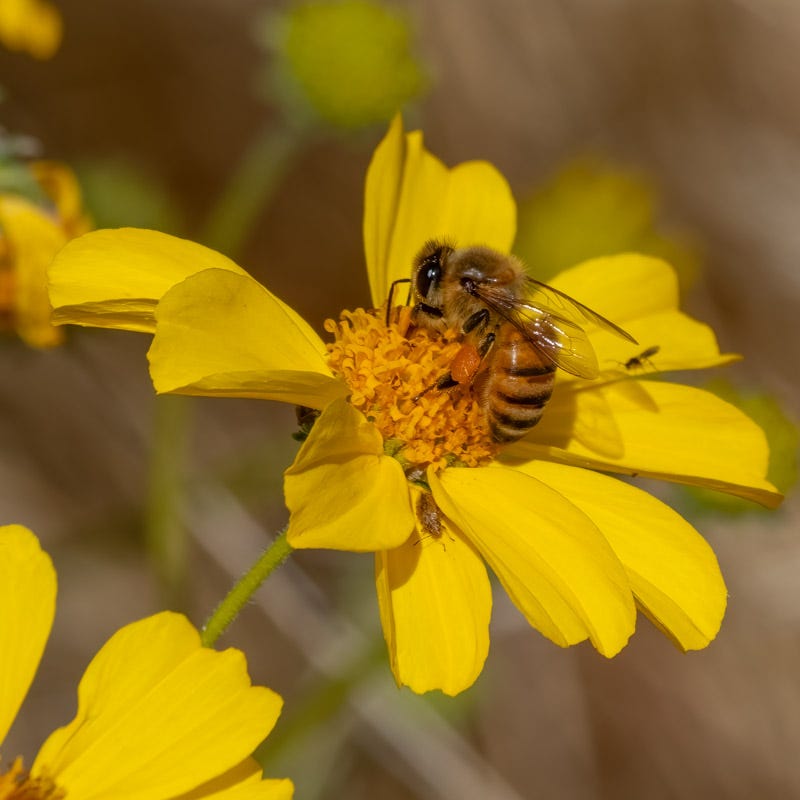Bright Yellow Flowers to Brighten Your Winter Day
Sunflowers, brittlebush flowers and honeybees
Some of you may be reading these posts in your email. If you click on the title or on my “Dan Weisz Photography” header, it will bring you to the webpage where the photos and the font size will be bigger.
I was driving north on Campbell Avenue and was startled when passing the University of Arizona Campus Agricultural Center (the Farm). There was a long, thick hedge of beautiful sunflowers. I called to ask about it and was told that the flowers were planted for two reasons. First, it was to help keep the dust down during the off season. And second, they said it looked nice and wanted to give people who were driving by a reason to smile.
The actress Helen Mirren said, “I don't think there's anything on this planet that more trumpets life than the sunflower. That's because of the reason behind its name. Not because it looks like the sun but because it follows the sun. During the course of the day, the head tracks the journey of the sun across the sky. A satellite dish for sunshine. Wherever light is, no matter how weak, these flowers will find it. And that's such an admirable thing. And such a lesson in life."
Helen Keller said, "Keep your face to the sunshine and you cannot see the shadows. It's what the sunflowers do."
Vincent Van Gogh is famous for his paintings of sunflowers. You can read about these painting here: https://tinyurl.com/VincentsFlowers
A few days later I was waiting to meet friends at the King's Canyon parking lot in the Tucson Mountains. In front of my car was a very large brittlebush plant that was full of flowers. It was also full of honeybees. It is the middle of January but, with the weather we've been having, it sometimes feels like springtime.
Brittlebush is actually related to the sunflower plant. Certainly, the bright yellow color evokes the same feelings as the bright yellow sunflowers do. The Desert Museum talks about this desert plant: https://tinyurl.com/ASDMBrittlebush
European Honeybees are the species most people know about, but they are not native to the Western Hemisphere. They were brought here to the New World to make honey. Unfortunately they compete with the over 1000 species of bees that live in the Sonoran Desert.
The Tucson Bee Collaborative is conducting significant studies of local bees. AZPM did a very nice video of the project last year:
The orange ball on the honeybee’s hind leg is called a “pollen basket”. Looking like saddlebags, those pockets are made of tightly woven hairs that form a depression on the bee’s hind leg. The pollen that is collected is brought back to the hive for food. It is also mixed with nectar to make honey.
You can learn more about the Tucson Bee Collaborative here: https://www.tucsonbeecollaborative.org
Native Brittlebush adds a dramatic splash of yellow throughout the desert and its cousin, the Common Sunflower, can add beauty when planted in your yard.










The effect of yellow upon the mind is of a bright, gay, gladdening nature, owing to its likeness to light. ~W. J. and G. A. Audsley, Taste versus Fashionable Colours: A Manual for Ladies on Colour in Dress, 1863
Wonderful photos, they brightened my day on a wet, cold, grey morning. Thanks also for the information on sunflowers, brittlebush flowers, and honeybees.